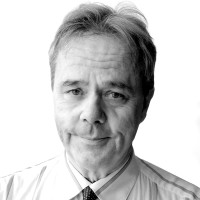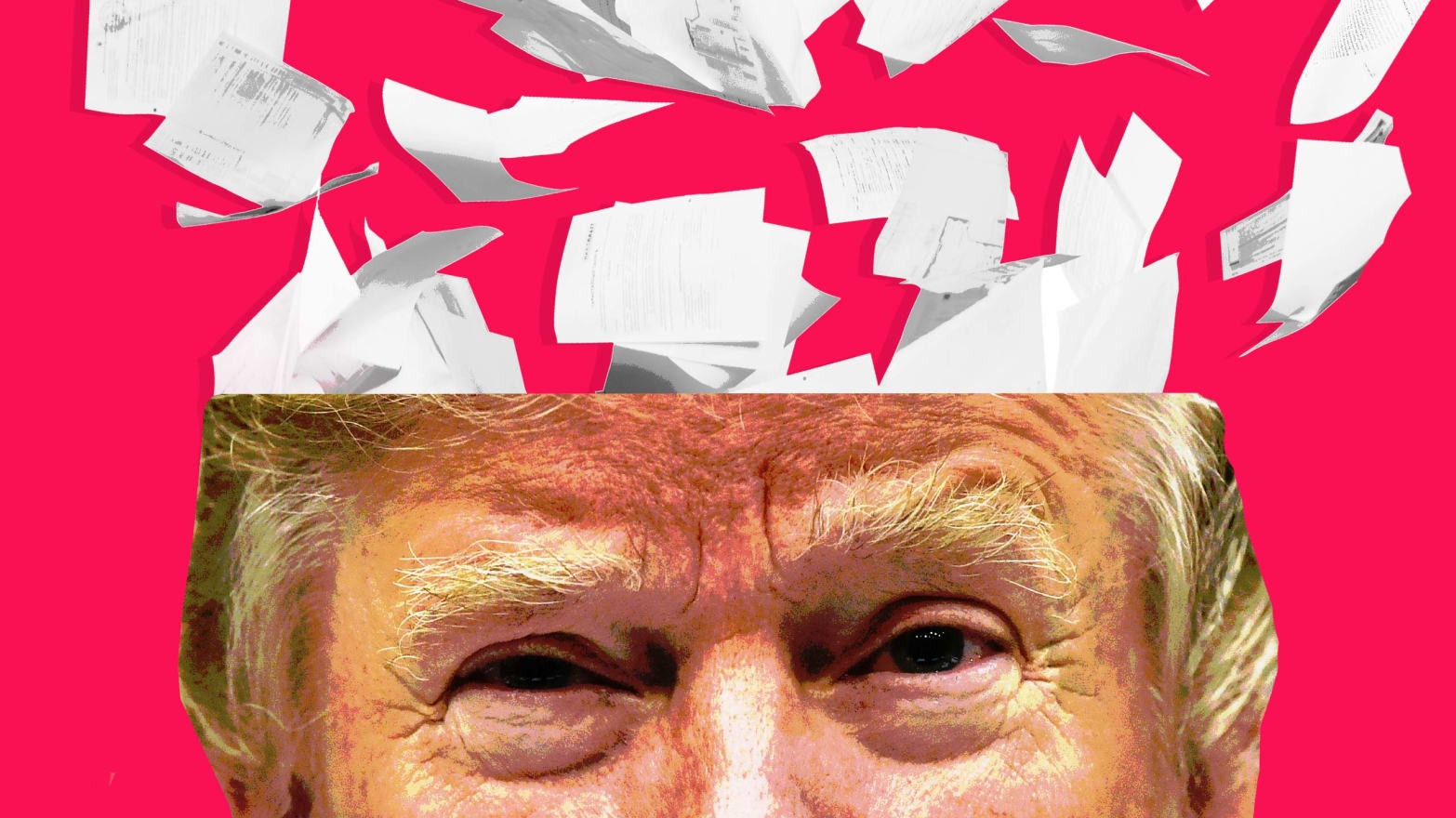Say thank you, Mr. President.
Were he to release just one personal tax form, President Trump would no doubt have chosen the 2-page summary from 2005, the very one that journalist David Cay Johnston revealed on the Rachel Maddow Show Tuesday night.
The 1995 return The New York Times revealed last year showed Trump reporting a $916 million loss enabling him to pay no federal income taxes at all that year and perhaps for years to come.
The 2005 return shows him actually earning $150 million and paying $38 million in taxes. Those numbers make Trump look like he really is a great businessman, with big bucks to back up the bluster.
If all his returns showed such numbers, Trump might have just gone ahead and released them during the campaign instead of inventing a series of excuses for why he could not do so.
But if he had released the 2005 return, he would have been expected to release the 2006 return, in which he likely listed the charitable donation of 436 acres from a failed golf course venture to New York State as a park. He proclaimed at the time of the donation that the land was worth $100 million. That is around $85 million more than what Westchester County officials peg as its actual value at the time.
And who knows what the other returns show?
Even in 2005, the full return would have details beyond the immediate income and tax numbers that Trump would no doubt just as soon keep private.
The rest of the filing would show that the 2005 windfall was the result of a deal made not by him, but by Chinese partners who had rescued him from a financial implosion a decade before and then parlayed the investment into a huge score.
Not only did Trump play no part in the best deal of his career, he actually fought it. He took his partners to court even as they proceeded to shelter the huge profit by making him an unwilling 30 per cent stakeholder in the purchase of two office buildings – one in Manhattan, the other in San Francisco — that remain his most profitable properties.
The subsequent returns would show that the two biggest moneymakers in the Trump empire are towers that he tried not to buy and do not bear his name. He gets only licensing and management fees from most of the towers emblazoned with TRUMP.
The big loss on the 1995 return testifies to Trump’s financial condition in 1994, when he was saved from ruin by a consortium of Chinese billionaires. They included Vincent Lo, who had become known as the Chinese Donald Trump due to his extravagant lifestyle and such tabloid adventures as dumping his first wife to take up with a beauty-pageant queen.
One difference was that Lo actually raked in big money. Trump was so eager to make a deal with Lo and his pals that he dispensed with his usual practice of negotiating on his home turf and flew to Hong Kong, where he made a fumbling attempt at using chopsticks at a banquet and insisted somebody else get the honor of starting on a HUGE fish that still had the head attached.
The Chinese agreed to assume the crushing debt on a big parcel of land that Trump had acquired on Manhattan’s West Side with the avowed aim of building Television City, home of NBC and the world’s tallest building. Trump was allowed to retain 30 per cent of the parcel and plans downsized to a row of luxury apartment buildings known as Trump Place. That was 30 per cent more than he otherwise would have kept, but not so much that his partners felt they had to include him when they moved to sell the tract.
Trump went litigiously ballistic upon learning that a property bearing his name had been sold without so much as consulting him. He called it a “very bad and destructive” deal, and filed a lawsuit insisting he could have made a much better one, charging his partners with everything from fraud to tax evasion to taking kickbacks.
The suit was tossed, which proved to be an unlikely Trump victory. He retained his 30 per cent share of the two buildings — 1290 Sixth Avenue in Manhattan and 555 California Street in San Francisco – and came to understand what a good deal the Chinese had made. He declined to sell his share when the Chinese peddled their 70 per cent interest to Vornado Realty Trust for $2.6 billion in 2007. Trump has continued to earn millions a year from the two properties, at least $340 million so far, without counting some $450 million in equity.
His senior partner in the properties, Vornado, is run by Steve Roth, who was in attendance at Trump headquarters on victory night. Trump gave Roth a shout-out from the stage and has since appointed him and another billionaire real estate developer, Richard LeFrak, to head a White House council tasked with monitoring $1 trillion in spending on infrastructure.
In that role, Roth attended a “strategic affairs lunch” at the White House last week. Roth’s other business in Washington, D.C. reportedly includes a bid on a $2 billion FBI headquarters outside the city, a project that is stalled appropriations-wise, perhaps in part because it has been pushed by FBI Director James Comey. The chosen developer will get the rights to the site of the present headquarters, which is just up Pennsylvania Avenue from the White House and across from Trump’s newest hotel. The Washington Post has called the property “a once in a generation development opportunity.” Vornado is already said to be one of the U.S. government's biggest landlords.
Vornado has also had business dealings with the real estate company owned by the family of Trump’s son-in-law, Jared Kushner. Vornado bought a 49.5% of a Kushner building in 2011. The Kushners had purchased the building at 666 Fifth Avenue in Manhattan for $1.8 billion on Jared’s birthday in 2007. The Kushners had until then been known as New Jersey real estate guys, just as the Trumps had been known as outer-borough real estate guys before the construction of Trump Tower.
Vornado now stands to make a huge profit when it is bought out as part of a partnership deal that the Kushners are reportedly making with Anbang, a Chinese insurance company with extensive links to that country’s leadership. Anbang recently purchased the Waldorf Astoria Hotel, where its chairman, Wu Xiaohui, met with Jared Kushner in November. The champagne that was served is said to go for $2,100 a bottle.
As reported in various news outlets, further financing for the deal between the Kushners and Anbang would be provided by the EB5 visa program, where foreign investors who put up $500,000 or more are granted residency with no vetting. The Kushners used the EB5 program to finance Trump Plaza Residence in Jersey City, a Trump project in licensed name only.
Meanwhile, Vornado computes each year the net profits from the two high profit buildings that do not bear the Trump name. The 30 per cent share is then paid to Trump and no doubt entered on his tax return as further proof that his best deal was one that he sought to scuttle after it was made by the Chinese Donald Trump and his fellow big time Chinese investors.
That was the deal in 2005, the year his tax return made it look like he was a great businessman and Trump was more than just a name. The takeaway numbers could almost make you think there was some reality to the reality TV show The Apprentice.
After Rachel Maddow revealed the 2005 tax return with anticipatory buzz on Sunday night, President Trump might have at least conveyed his gratitude. His elder son did.
“Thank you Rachel Maddow for proving to you #Trump hating followers how successful @RealDonaldTrump is & that he paid $40mm in taxes!” Donald Trump, Jr. tweeted.
Who would have thought that the Trumps would ever have cause to thank Rachel Maddow for anything?

